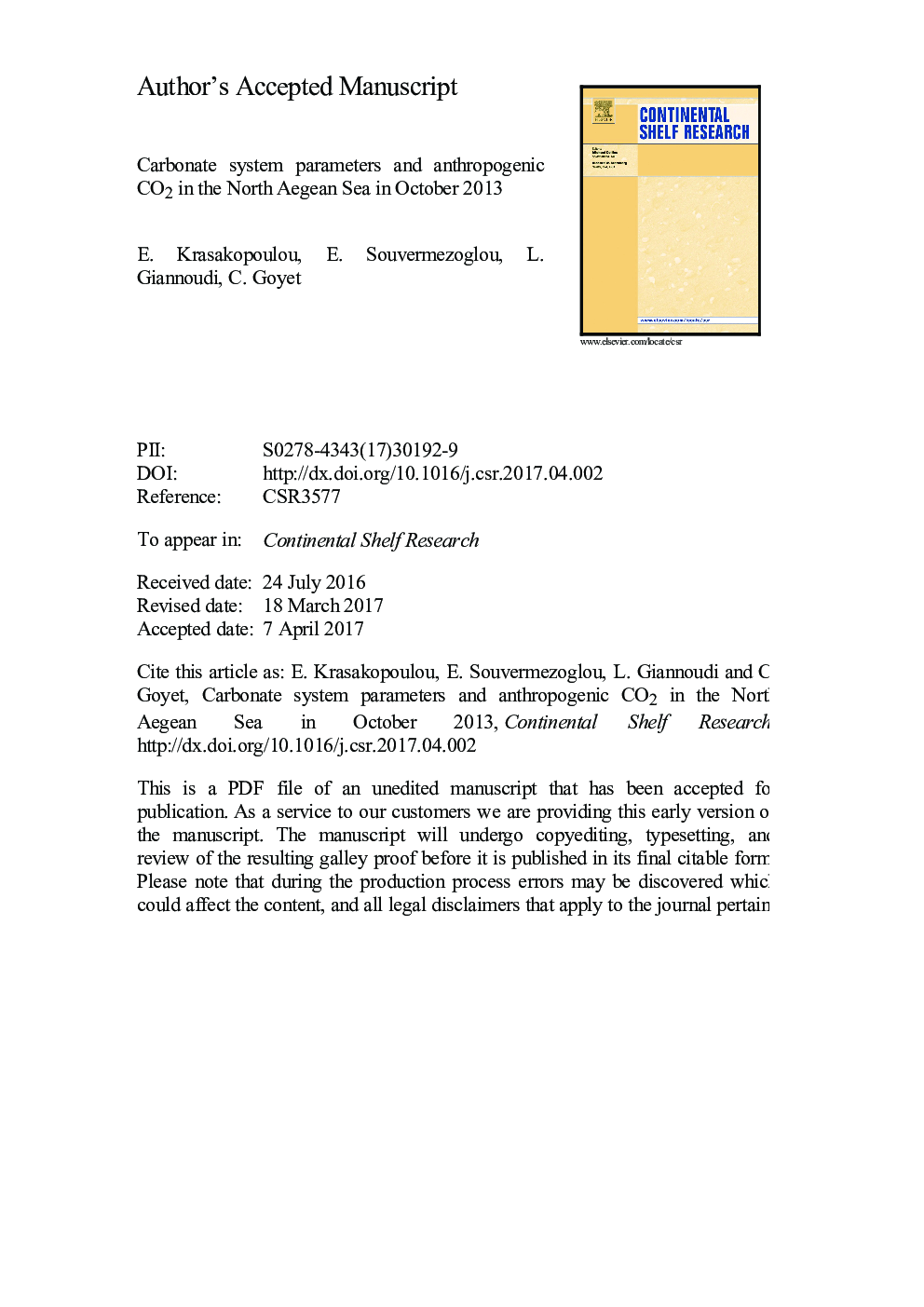| Article ID | Journal | Published Year | Pages | File Type |
|---|---|---|---|---|
| 8884156 | Continental Shelf Research | 2017 | 40 Pages |
Abstract
High anthropogenic CO2 content was detected at intermediate and deep layers of the North Aegean reflecting the effective transportation of the absorbed atmospheric CO2 from the surface to the deeper waters via the dense water formation episodes. The MLIW layer is more affected by the penetration of CANT than the NAgDW that fills the deep part of the basin. The observed variability of CANT distribution reflects the influence of the intensity of dense water formation events, of the different θ/S properties of the newly formed dense waters as well as of the diverse submarine pathways followed by the cascading dense waters. The invasion of CANT has lead to more acidic conditions and to lower saturation degree of calcium carbonate in relation to the preindustrial era. The findings of this study provide baseline information about the carbonate system properties of the North Aegean and highlight its active role in sequestering and storing anthropogenic CO2.
Related Topics
Physical Sciences and Engineering
Earth and Planetary Sciences
Geology
Authors
E. Krasakopoulou, E. Souvermezoglou, L. Giannoudi, C. Goyet,
